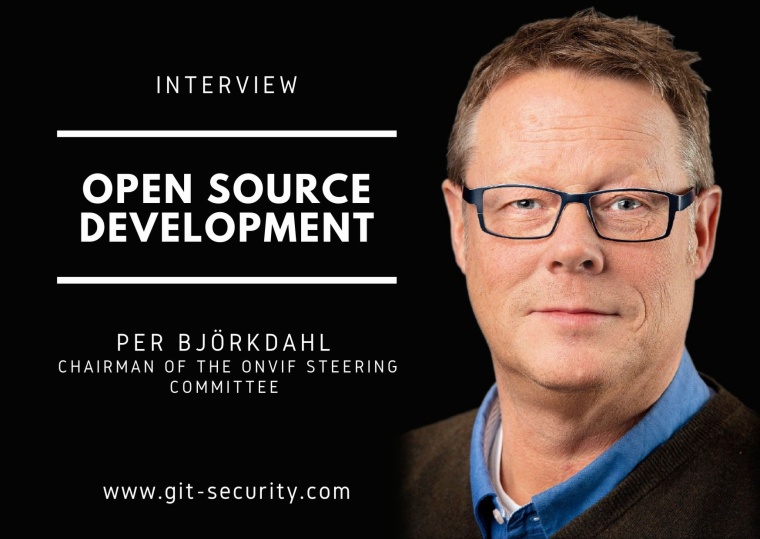GIT SECURITY: What is open source and what exactly does this mean for Onvif?
Per Björkdahl: At its base definition, open source refers to something, usually computer code, that is publicly accessible and can be shared and modified to fit specific applications or use cases. Onvif network interface specifications, which are the main documents that define the language and methods by which devices and clients can communicate with one another, are open standards that have always been publicly available. Historically these specifications were developed and maintained within the Onvif membership environment. By adopting an open source methodology, companies outside of Onvif, and potentially developers from many different companies and industries whom we have not reached before, will have the ability to provide input on our specifications as part of the open source development process.
On a more practical level, this also means the opportunity to significantly streamline the administrative and collaborative processes of creating our network interface specifications. By moving the work of the maintenance and management of the network specifications onto GitHub, an online open source development platform, this will automate much of the detailed, process-oriented work that is required to produce technical specifications. Both the greater openness of open source and the automation offered by GitHub will undoubtedly spur greater feature interoperability and innovation and allow us to provide new specifications faster to meet existing and future market demands.
Onvif is known for its specific profiles for video streaming, access control and more. How does this impact the development of future profiles?
Per Björkdahl: This move to open source development is limited to the engineering of the Onvif network interface specifications, so profiles are not included in this strategy, and profile development will remain under the purview of Onvif member companies. Our six existing profiles that address video streaming, storage and retrieval, quick installation and access control configuration will remain unaffected, as will our upcoming release candidates, or draft profiles, for Profile D for access control peripherals and Profile M for metadata. However, as profiles are groupings of functionalities that originate in the Onvif main network interface specifications, we widely expect that specification contributions realized via open source will help in some way to support the development of future profiles.
Will this have any impact on the Onvif conformance process or Onvif membership?
Per Björkdahl: It’s important to note that the addition of open source development will have no impact on the Onvif product conformance process, Onvif membership nor anything to do with the development of the test tools used to determine product conformance to Onvif profiles. The addition of open source development affects only one part of the work we do at Onvif, and that is the development of network interface specifications for IP-based physical security products.
While anyone will be able to contribute to Onvif network interface specification development using GitHub, only Onvif Full and Contributing members will continue to have early access to and the ability to provide guidance on future new profiles introduced by Onvif. A company still needs to maintain Onvif membership at the full, contributing or user level to declare Onvif-conformant products, to use Onvif conformance tools, and to use the Onvif logo and Onvif profile logos.
How will this new initiative impact the way systems integrators and end users utilize Onvif?
Per Björkdahl: From a logistical standpoint, nothing will change in the way that systems integrators and end users use Onvif-conformant products to assemble best-of-breed solutions for their customers or own organizations. We do anticipate that the streamlined specification engineering process via GitHub will enable us to bring new developments to the marketplace more quickly and be able to more easily incorporate external contributions from software engineers and developers from industries across all sectors, including IoT, Artificial Intelligence, cloud services. The end result will be greater flexibility in the types of solutions that are interoperable with one another for a wider range of solutions that both systems integrators and end users can benefit from.
What else can the industry expect to see as a result of this initiative?
Per Björkdahl: Open source development is a trend that has proven to be successful and makes specification contributions easier and more efficient. The benefits have been realized by countless organizations who have realized increased collaboration, additional transparency and new perspectives that have allowed their organizations to thrive and expand. With a solid footing in the security industry, Onvif’s interoperability specifications have the capability to both provide and capitalize on opportunities in other technology sectors, providing a bridge between security technology and building automation systems or other ancillary systems that depend on the standardization of data for basic interoperability.






